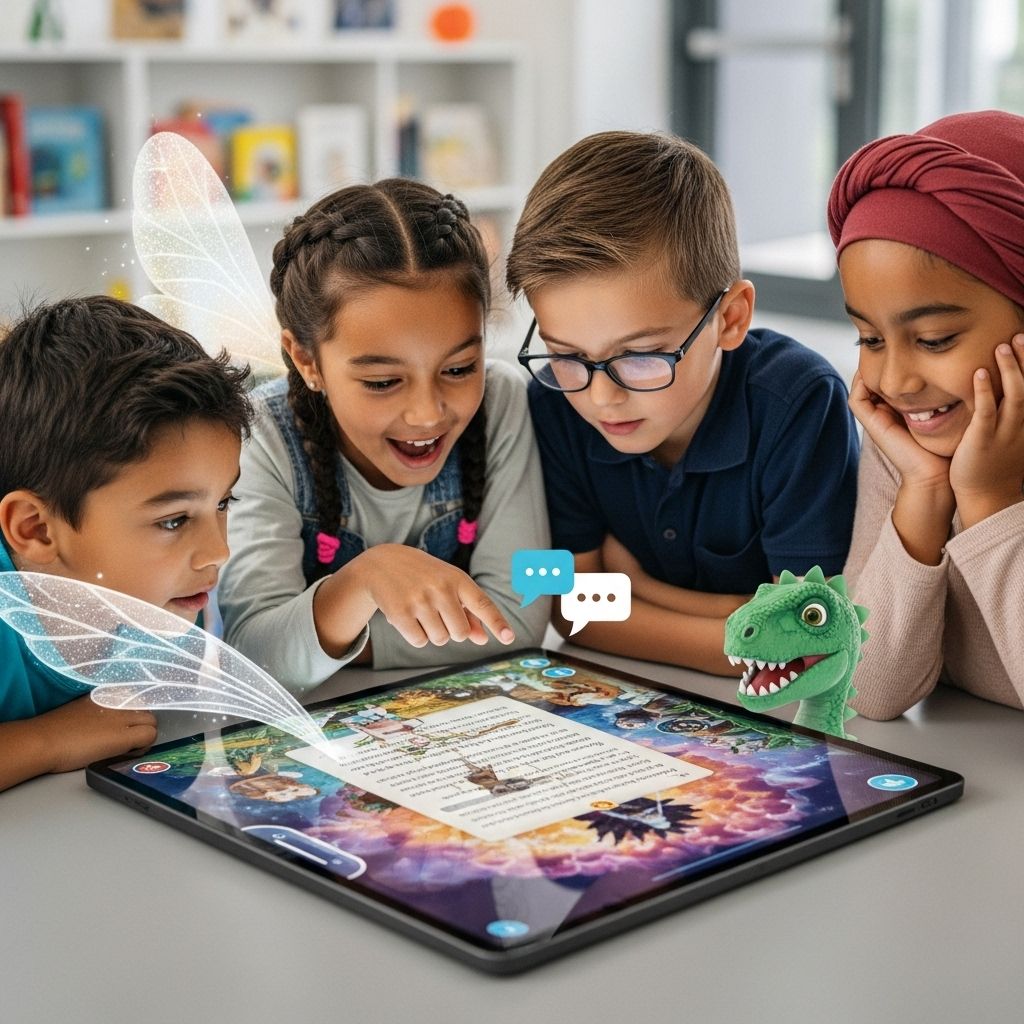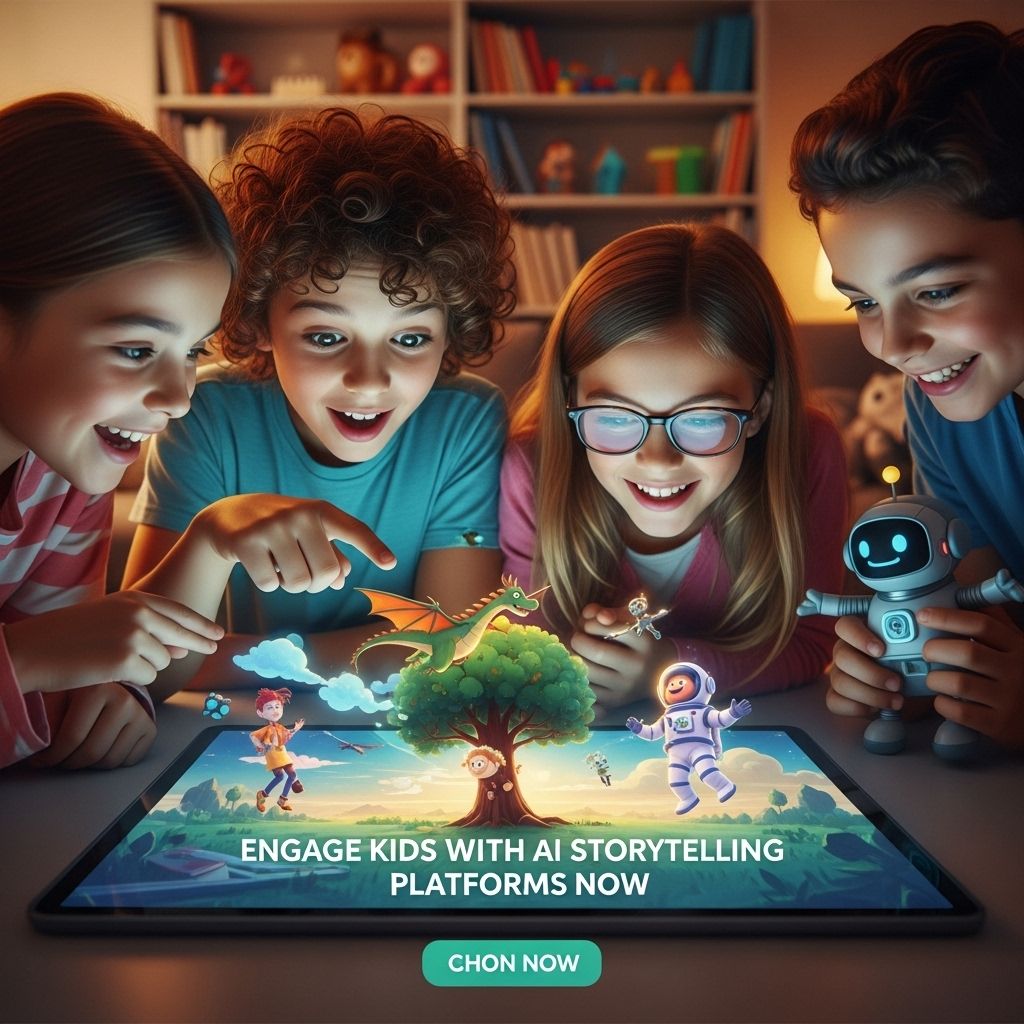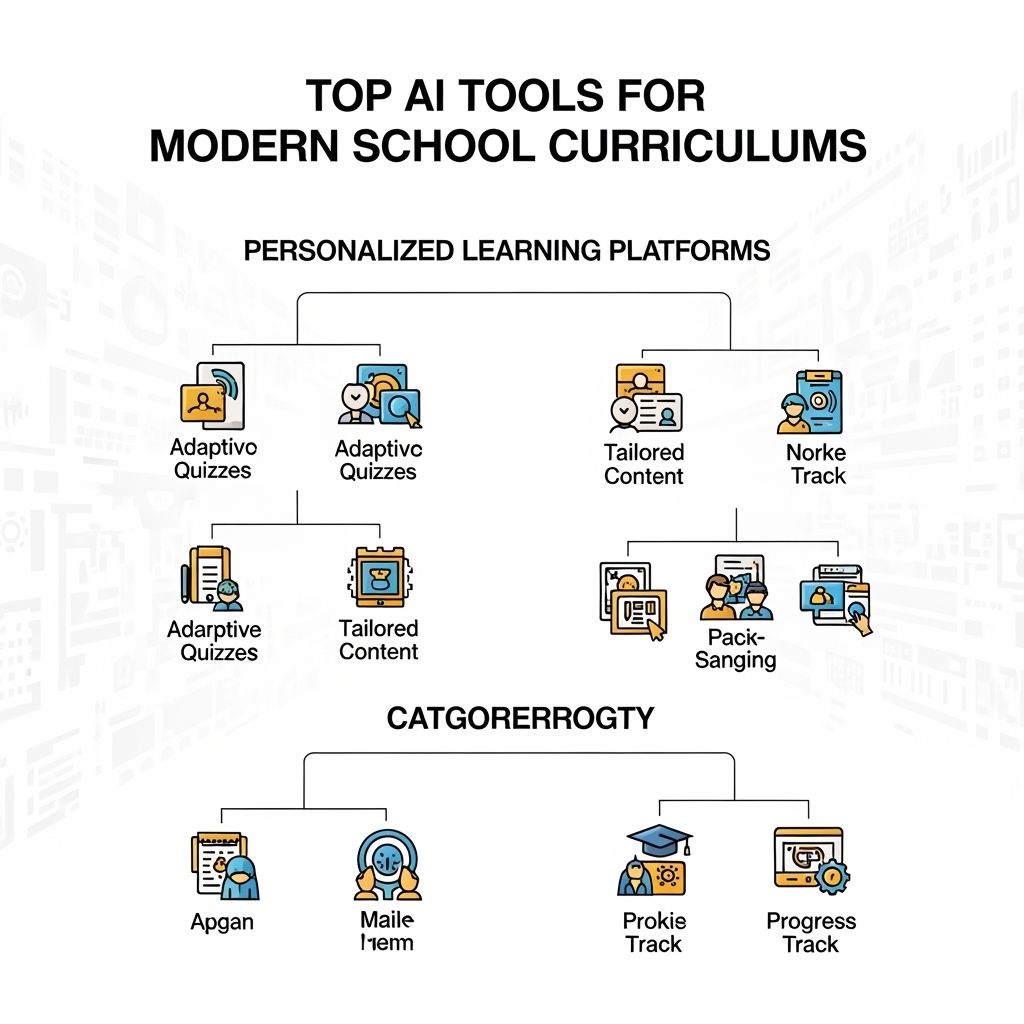Engage Kids with AI Storytelling Platforms
Discover how AI storytelling platforms can captivate children's imaginations and enhance their learning experiences.

In the age of technology, storytelling has evolved from the traditional oral traditions and books into interactive digital experiences. AI storytelling platforms have emerged as innovative tools that not only captivate children’s imaginations but also enhance their creativity, critical thinking, and engagement with narratives. As educators, parents, and tech enthusiasts, it is essential to explore how these platforms can be effectively utilized to foster a love for storytelling and learning among kids.
Table of Contents
Understanding AI Storytelling Platforms
AI storytelling platforms leverage artificial intelligence to generate or assist in creating stories. These tools often allow users to input characters, settings, and plot points, enabling a personalized narrative experience. The integration of AI means that these platforms can adapt to a child’s preferences and responses, making storytelling more interactive and engaging.
Key Features of AI Storytelling Platforms
- Personalization: Tailors stories based on user input, ensuring that children’s choices impact the outcome.
- Interactive Elements: Encourages children to participate in storytelling through choices and inputs.
- Creative Writing Support: Provides prompts and suggestions for children to expand their writing skills.
- Multimedia Integration: Combines text with images, sounds, and animations to enhance the storytelling experience.
The Benefits of AI Storytelling for Children
Engaging kids with AI storytelling platforms offers a plethora of benefits that can contribute to their cognitive and emotional development.
1. Enhancing Creativity
The creative process is nurtured as children are encouraged to invent characters, plots, and worlds. This freedom to express their imagination helps build confidence in their creative abilities.
2. Improving Language Skills
AI storytelling platforms often promote vocabulary expansion and language comprehension. Kids can explore new words in context, enhancing their linguistic abilities as they interact with the stories.
3. Critical Thinking Development
As children make decisions that influence the story’s direction, they practice critical thinking and problem-solving skills. They learn to anticipate outcomes based on their choices, fostering analytical skills.
4. Fostering Emotional Intelligence
Stories often contain themes of friendship, conflict, and personal growth. Engaging with these narratives helps children understand diverse perspectives and emotions, promoting empathy.
Popular AI Storytelling Platforms
Here is a look at some notable AI storytelling platforms that can be used to engage children:
| Platform | Description | Age Group |
|---|---|---|
| StoryJumper | A platform where kids can create illustrated storybooks online. | 5-12 years |
| ChatGPT | An interactive tool that can generate stories based on user prompts. | 8+ years |
| Inklewriter | An interactive storytelling platform that allows kids to write and share their own stories. | 10+ years |
| Twine | Used for creating nonlinear interactive stories in a user-friendly format. | 12+ years |
How to Use AI Storytelling Platforms Effectively
To maximize the benefits of these platforms, here are some tips on how to use them effectively:
1. Encourage Exploration
Allow children to explore different genres and styles of storytelling. This freedom enables them to discover their interests and encourages experimentation with narrative structures.
2. Collaborate on Stories
Engage in collaborative storytelling sessions where kids and adults create stories together. This shared experience fosters communication and can lead to rich narratives that blend perspectives.
3. Set Story Challenges
Generate creative challenges such as:
- Write a story that begins with a specific sentence.
- Create a character who is opposite of the protagonist.
- Incorporate three random objects into the story.
4. Share and Publish Stories
Encourage children to share their stories with friends and family or publish them on platforms that allow for sharing. This not only validates their efforts but also builds confidence in their storytelling abilities.
Integrating AI Storytelling into Education
AI storytelling platforms can be an integral part of educational curriculums. Here’s how they can be used in the classroom:
1. Storytelling Workshops
Conduct workshops where students can learn to use AI storytelling tools. This can enhance their tech skills while engaging them in creative writing.
2. Cross-Disciplinary Projects
Integrate storytelling with other subjects such as history or science. Students could create stories that explain historical events or scientific concepts, making learning more engaging.
3. Assessing Understanding
Using storytelling as a means of assessment allows teachers to gauge the understanding of subjects in a fun and interactive manner. Students can be tasked with creating stories that reflect their learning.
Challenges and Considerations
While AI storytelling platforms offer numerous benefits, there are challenges and considerations to keep in mind:
1. Screen Time
Balancing screen time is essential. Encourage breaks and ensure a healthy mix of digital and offline storytelling experiences.
2. Content Quality
Not all AI-generated content is of high quality. It is essential to review and guide children’s interactions with these platforms to ensure positive outcomes.
3. Privacy and Safety
When using online platforms, be aware of privacy settings and the information shared. Educating children about online safety is crucial.
Conclusion
AI storytelling platforms present an innovative opportunity to engage kids in the art of storytelling, enhancing their creativity, language skills, and emotional intelligence. By integrating these tools into educational settings and encouraging exploration, children can develop a lifelong passion for stories, writing, and digital literacy. As technology continues to evolve, so too does the landscape of storytelling, opening new doors for future generations.
FAQ
What are AI storytelling platforms for kids?
AI storytelling platforms for kids are digital tools that use artificial intelligence to help children create, customize, and interact with stories, enhancing their creativity and imagination.
How can AI storytelling enhance children’s creativity?
AI storytelling encourages creativity by allowing children to generate unique plots, characters, and scenarios, fostering their imaginative thinking and storytelling skills.
Are AI storytelling platforms safe for children?
Many AI storytelling platforms are designed with child safety in mind, featuring parental controls and content moderation to ensure a safe and age-appropriate environment.
What age group is suitable for AI storytelling platforms?
AI storytelling platforms are generally suitable for children aged 5 to 12, but many can be adapted for younger or older audiences depending on the platform’s features.
Can AI storytelling help with language development?
Yes, AI storytelling can aid language development by encouraging children to practice vocabulary, sentence structure, and narrative skills as they create and share their stories.
Are there any free AI storytelling platforms available?
Yes, there are several free AI storytelling platforms available that offer basic features, allowing children to explore storytelling without any financial commitment.








